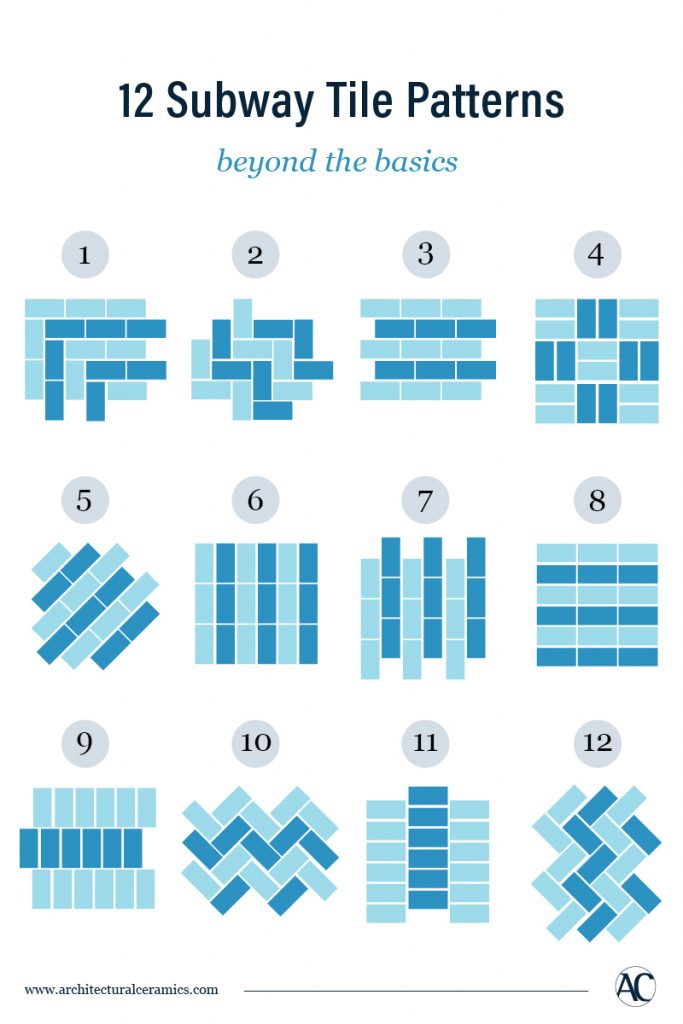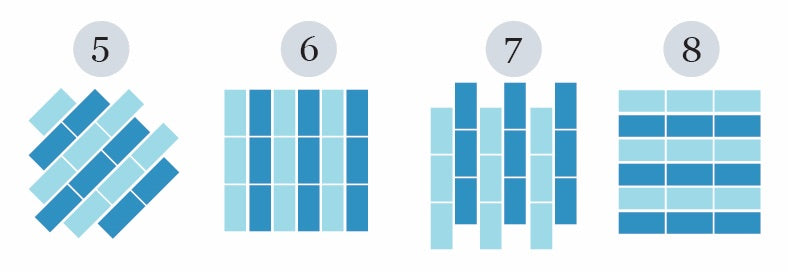Your Cart is Empty
It's Easter weekend. How are you celebrating with friends and family? If you have young children, they're likely taking part in an Easter egg hunt.
If you're hunting for ways to update your traditional subway tile, then look no further. Architessa s is ready to hop to it, with a dozen EGG-cellent subway tile patterns that go beyond the basics.

Which pattern do you want to take a crack at? Keep scrolling to find our twelve ideas broken down by row, where each pattern is identified with a name and short description:

Right Angle: Our first pattern, at first glance, looks like a Chevron. In a traditional chevron pattern, however, the ends of the tile are cut to form a miter-joint. The subway tiles here in the Right Angle pattern use a butt-joint instead. Both joint types are typical of wood-working and translate to tile installation as well.
Traditional Herringbone: This is probably the most recognizable and popular pattern of the twelve mentioned. If using it as a backsplash, here the subway tile is installed parallel and perpendicular to your counter top.
One-Third Offset: Our third pattern idea, shifts a third of the length of a tile. The trick though, is to alternate which direction you shift, left or right, in each given row.
Parquet or Basketweave: If you think you've seen this pattern before, it's because it is typical of hardwood floors. Especially those installed in the 1960's. Bringing this century-old idea from the floors to the walls makes it a popular pattern today.

Diagonal Half Offset: Who says a traditional half-offset of running bond subway tile has to be installed horizontally? Mix it up and put the tile on the diagonal instead.
Vertical Stacked Bond: Also known as a soldier course in brick-work, this pattern gets your attention. Depending on the color you use, the grout lines will become the focus of this pattern.
Vertical Half Offset: Turning this running bond pattern vertically gives it a different feel. Try using it as an accent band in the shower. It may feel like falling water.
Horizontal Stacked Bond: If you prefer to have things just so in your home, then this pattern may be the way to go. This stacked bond keeps the look of your subway tile clean and simple.

Half Offset Vertical Stacked Bond: Similar to the Vertical Stacked Bond (6) in the previous group, the pattern shown here uses a half offset as well.
Horizontal Herringbone: Want a twist of the Traditional Herringbone (2)? Install the pattern at a 45 degree angle from your counter top. This installation method has become popular among designers and homeowners alike.
Half Offset Horizontal Stacked Bond: Add a little interest to the Horizontal Stacked Bond (8) by adding a half-offset.
Vertical Herringbone: We like the idea of flipping this traditional herringbone pattern vertically. When some people zig, we prefer to zag.
We've given you a dozen different pattern ideas for how to lay your subway tile. We have a lot more than a dozen types of subway tile, however, available from Architessa. Let's talk about your residential or commercial tile project in one of our DC-metro area showrooms today!
If you'd prefer to start shopping or browsing online - visit our Subway Tile Collections.
For further questions about the tile patterns featured here, or to place an order, please contact [email protected]. Want weekly updates about Architessa and our product lines? Join our newsletterhere.
